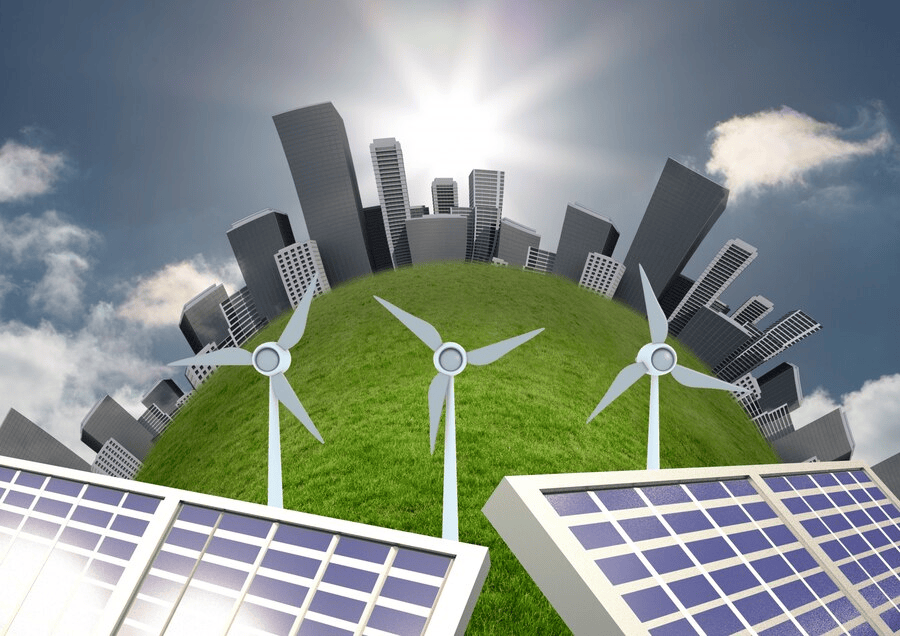A smart city is more than just a high-tech metropolis; it’s an urban area that leverages systems like the smart grids to improve residents’ quality of life, optimize resource usage, and boost sustainability.
By integrating technology and data, a smart grid enhances the management of city assets such as transportation, hospitals, power plants, and water supplies. This efficient approach is essential to tackling the challenges of urbanization and ensuring cities remain livable and resilient for the future.
Understanding Smart Grids
A smart grid represents a significant upgrade from the traditional power grid. While a traditional grid is a one-way system delivering electricity from the utility to the consumer, a smart grid is a two-way communication system. It uses advanced digital technology to monitor and respond to changes in electricity demand, supply, and distribution in real time. This creates a more efficient, reliable, and sustainable energy system.
Core Components
- Advanced Metering Infrastructure (AMI): Smart meters that provide real-time data on electricity usage.
- Distributed Energy Resources (DER): Small-scale power generation technologies like solar panels or wind turbines that contribute to the grid.
- Energy Storage Systems (ESS): Batteries and other systems that store energy for later use.
- Real-time Monitoring and Control Systems: Software and hardware that enable the grid to respond instantly to fluctuations in supply and demand.
How Smart Grids Empower Smart Cities
Smart grids play a crucial role in making cities smarter. They enhance energy efficiency by reducing losses and optimizing electricity usage. Smart grids also contribute significantly to lowering a city’s carbon footprint by integrating renewable energy sources. Furthermore, by improving the reliability and resilience of the power supply, smart grids ensure that essential services remain operational during outages or emergencies.
Benefits of Smart Grids in Urban Development
Economic Advantages
Smart grids offer significant economic benefits. For consumers, they reduce electricity costs by enabling more efficient energy use. For utilities, smart grids open up new revenue streams, such as dynamic pricing models and demand response programs. Moreover, the integration of renewable energy sources within the grid creates opportunities for new business models and innovations.
Environmental Impact
Smart grids are pivotal in achieving sustainable urban growth. They support the integration of renewable energy, such as solar and wind, into the power supply, reducing the reliance on fossil fuels. This shift contributes to the reduction of greenhouse gas emissions, helping cities meet their climate goals.
Social Benefits
Smart grids also offer social advantages, such as increased energy access and equity. By making energy distribution more efficient and affordable, its help reduce energy poverty. Additionally, the reliability of smart grids enhances the quality of life in urban areas, ensuring that essential services remain uninterrupted.
Read More: Why Location Matters in Industrial Estates Development: Key Benefits Explained
The Business Benefits of Smart Grids: Unlocking New Opportunities
As businesses navigate the challenges of the modern economy, the integration of advanced technologies has become essential to maintaining competitiveness and ensuring sustainability. One of the most transformative technologies in this regard is the smart grid. Beyond its environmental and social benefits, the smart grid offers a multitude of advantages specifically for businesses, enabling them to operate more efficiently, reduce costs, and explore new revenue streams. Here’s how:
1. Operational Efficiency
Smart grids provide real-time data, allowing businesses to optimize energy use, reduce waste, and streamline operations.
2. Cost Savings
Dynamic pricing enables businesses to lower energy costs by adjusting consumption during off-peak hours.
3. Renewable Energy Integration
Businesses can easily incorporate solar or wind energy, reducing reliance on traditional power sources and supporting sustainability goals.
4. Reliability and Resilience
Smart grids ensure a reliable power supply, minimizing downtime, and protecting operations during outages.
5. New Revenue Streams
Companies can sell excess energy back to the grid, creating additional income, and exploring innovative business models like energy as a service.
6. Customer Engagement
Smart grids offer personalized services, boosting customer satisfaction, and loyalty through tailored energy solutions.
7. Strategic Advantage
With better data and insights, businesses can future-proof operations, adapt to market changes, and lead in their industries.
Smart grids are more than just an upgrade to our energy infrastructure; they are a critical component of the smart cities of the future. By enhancing energy efficiency, integrating renewable resources, and improving the reliability of the power supply, smart grids are helping to create more sustainable, resilient, and livable urban environments.
Subang Smartpolitan is set to become a leading example of sustainable urban development with the future integration of smart grid technology. As a cutting-edge smart city, Subang Smartpolitan is designed to support a wide range of high-tech industries, including electric vehicles (EVs), positioning it at the forefront of modern urban innovation.
Investing in Subang Smartpolitan is not just a smart business decision — it’s an opportunity to be part of a future-focused urban community. With its advanced infrastructure and commitment to sustainability, Subang Smartpolitan is the ideal location for businesses in the EV industry and other high-tech sectors. Join us in building the cities of tomorrow, today.
Visit https://suryacipta.com/subang/ for more information.

